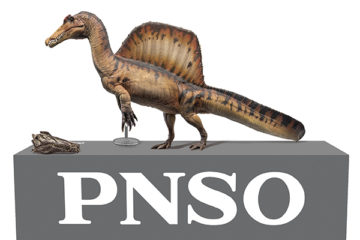

Stories written by: YANG Yang

Model Size / 36.5cm X 10.5cm X 13cm
Model Material / Environment-friendly PVC, hand painting
Model Structure / Solid Structure
Transparent Support / Yes
Lucio the Amargasaurus 1:35 scientific art model is the solution provided by ZHAO Chuang and YANG Yang to “Creative Activities in Children’s Space,” which includes:

A Set of Model and Base
Lucio the Amargasaurus 1:35 Scientific Art Reconstructed Model / 1pc
Stand for Lucio the Amargasaurus 1:35 Scientific Art Reconstructed Model / 1pc
Base for Lucio the Amargasaurus 1:35 Scientific Art Model (Base of Box)/ 1pc
A Joint Scientific Art Exhibition
Scientific Art Posters / 20 pcs
Reconstructed Images of Lucio the Amargasaurus and the Superfamily Diplodocoidea, 42 X 29.7cm (A3) / 10 pcs
Reconstructed Images of Lucio the Amargasaurus and the Superfamily Diplodocoidea, 29.7 X 21cm (A4) / 10 pcs
Drawing Cards / 4 pcs
Children’s Creative Drawing Cards, 29.7 X 21cm (A4) / 4 pcs
Exhibition Labels / 23 pcs
Scientific Art Painting Labels, 12.7 X 8.9cm (5”) / 18 pcs
Children’s Creative Works and Group Information Labels 12.7 X 8.9cm (5”) / 4 pcs
Videos / 6 episodes
The Story of Building the 1:35 Scientific Art Models of Lucio the Amargasaurus / 1 episode
Join ZHAO Chuang in Drawing Lucio the Amargasaurus / 5 episodes
Note: watch the videos by subscribing PNSO.Official YouTube channel.
A Manual
PNSO Dinosaur Museum Children’s Creative Activities Solution Manual / 1 volume
Owning your dinosaur museum will be a wonderful thing!
We encourage more children to join us to create a museum that they own. Welcome you and your children to participate in this scientific art activity!

Note: the frames are not included in the product package.
PNSO Dinosaur Museum
Creative Activities in Children’s Space
PNSO Dinosaur Museum Creative Activities in Children’s Space Solution: Lucio the Amargasaurus and the Superfamily Diplodocoidea Scientific Art Exhibition is part of the “PNSO New Aesthetic Education Project: Join ZHAO Chuang and YANG Yang to Creating Amazing Stories on Earth” which is facing to the children aging 6 to 12. In this solution, we provide two scientific art activities.
Activity I: PNSO Dinosaur Museum Scientific Art Exhibition of Lucio the Amargasaurus and the Superfamily Diplodocoidea: Explore a Scientific Art Exhibition.
Activity II: PNSO Dinosaur Museum Scientific Art Exhibition of Lucio the Amargasaurus and the Superfamily Diplodocoidea: Join Us in Creating a Scientific Art Exhibition.
Children participating in the activity will learn about designing an exhibition, from planning and preparation to presentation and visiting. They will also participate in planning, designing, and presenting an exhibition.
We take exhibition, a specialized scientific art activity, as a means to integrate science and art. Children will learn about classification in biology, understand the laws of evolution, and get ideas about the differences between individuals and why the differences exist. They will be able to compare things according to logical rules, have a preliminary sense of creating characters, and eventually use artistic means in an exhibition to share their thoughts.
By taking part in the activities of PNSO Dinosaur Museum Scientific Art Exhibition of the Lucio the Amargasaurus and the Superfamily Diplodocoidea, children aged 6-12 will develop readiness in science, writing, logic, practical skills, and expression to enhance their capacities in cognition, thinking, and hands-on.
Explore the exhibition and take a first look how ZHAO Chuang and YANG Yang created Lucio the Amargasaurus.

Preface
Of all the animals that have ever appeared on Earth, the sauropod dinosaurs were the largest land animals. These dinosaurs are known for their long necks and long tails, and the largest of them could grow to more than 40 meters, making them spectacular. The superfamily Diplodocoidea is a branch of sauropods, most of which had a slender body and very long neck and tail. Their tail was distinctive in being like a whip: long, slim, and flexible. However, some members had taken a different evolutionary path in having a short neck. This choice might be related to the different plants they ate. Amargasaurus is a representative short-necked member in the superfamily Diplodocoidea. Their appearance was peculiar because they had sharp spines growing from the neck to the tail. Although the Amargasaurus was small, these spines made them look imposing.
In the exhibition “PNSO Dinosaur Museum: Lucio the Amargasaurus and the Superfamily Diplodocoidea,” we will introduce you to an Amargasaurus named Lucio and its relatives, the other members of the superfamily Diplodocoidea, to show you the lives of this peculiar group.

04 The Spines of Amargasaurus
The most salient feature of Lucio the Amargasaurus was the towering spikes, which were elongated neural spines. The spines were down from the neck all the way to the buttocks in two parallel rows. The longest ones were at the neck, and some of these could grow to 65 cm long. On the back, the spines were shorter and merged into a single row in the middle of the back. These spikes were not directly used in combat, but they made the Amargasaurus visually larger and effectively deterred predators from approaching.
…
…
Please find more content within the product package.


